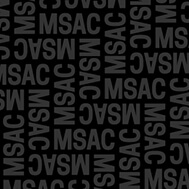About the Artist
Azerbaijani and Russian American artist, Leyla Rzayeva (b. Moscow ’86) has shown her work in Washington D.C., Baltimore, and Rehoboth, Delaware including George Mason University and the inaugural 2016 Contemporary Museum Artist Retreat. Rzayeva received BFA in Painting and Printmaking from Maryland Institute College of Art (’08) and holds a Professional Printer Certificate from Tamarind Institute, University of New Mexico (’09), nonprofit center for fine art lithography dedicated to reviving the art of lithography and the growth of contemporary printmaking around the world. In 2015 Rzayeva established Clubhouse Lithography Workshop, offering artists tools and space to create original prints and multiples.
Leyla Rzayeva website View Website
Leyla Rzayeva website Purchase Art
Artist's Statement
As an Azerbaijani and Russian American artist, my choices are informed by visual traditions of Baku, Stavropol, and Caucasus regions of West Asia. Born into that cultural tradition, I reach for it in my work. Works on paper and canvas depict esoteric understanding of natural phenomena, color, plant and mineral forms.
I often meditate on the question of what is skill or mannerism in representation. It is a real stumbling point for me with two-dimensional work. All representation is rich in information about itself and its relation to other subjects. Drawing line and shape as flat is very valuable to me. Representing visual elements as a flat mark speaks in a very specific ways about space and experience without mannerism. That is why you see blank areas of canvas or paper in my work. I like considering the effort made in a painting vs ability to communicate information.
In recent exploration of material vs intangible qualities, I have been influenced by art and writing of Cuban painter Enrique Martinez Celaya and Irish poet and theologian John O’Donohue. Their understanding of authenticity, time, and complexities and mysteries of experience has influenced my understanding of perception. Specifically when visual perception is heightened in terms of one’s awareness, being able to recognize when that process happens and looking further into the senses. Alfred Stieglitz refers to this process as forming the equivalent of perception in art.

